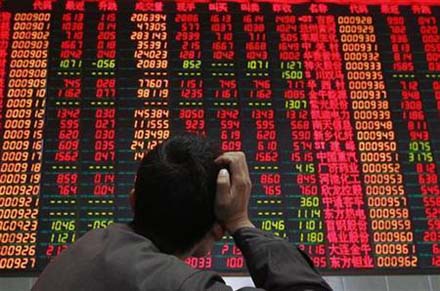|
February 18, 2009
Global Financial Crisis

- Timeline of the Finanical Crisis
- US 2007- The housing market started to show a decline and this caused the credit crunch experienced by financial institutions. People who could avail from the housing market through subprime lenders. These are companies that lent money to individuals who have poor credit records or who have incomes that cannot cover the downpayment of a house.
- Since 2007, however, subprime lenders incurred bad debts form homeowners who could no longer pay their mortgages and thus faced foreclosures. This affected a number of financial institutions because they were sold stocks of the mortgages.
- What caused the global financial crisis?
- One of the reasons systematic failure of the global financial system is attributed to the unipolar financial system and the dominance of the US dollar in international trade.
- Back in 1933, the Glass-Seagall Act(GS Act) was implemented as a solution to the near failure of banks during the Great depression. It banned commercial banks from having investments. Commercial banks, however, partnered with banks and created mediums that were not part of the GS Act. Eventually, the Gramm-Leach-Bliley Act (GLB Act) replaced the GS Act. The GLB Act or Financial Modernization Act took effect in 1999 and it allowed commercial and investment banks to merge.
This paved the way for the subprime mortgages which were used in the housing market.
- Recession explained.
- A recession can be simply defined as "a period of general economic decline; specifically, a decline in the Gross Domestic Product (GDP) for two consecutive quaters".
- Source of definition
- The characteristics of a recession in an economy are high unemployment rate, stock market losses, and the lack of business growth. If not solved, a recession may lead to a depression.
- A recession, however, can put a stop to an inflation which is the rise in the prices of goods and services. This is because during a recession, people tend to spend less.
- click here to view an article on The Effect of the Global Recession on the Philippines
- Mass Layoffs due to Recession
- In an article in The Manila Times,Dennis Arroyo, Chief of the National Policy and Planning Staff(NPPS) of the National Economic and Development Authority (NEDA), said that the unemployment rate in the country would not reach 10 percent. The figures, however, are predicted to range from 40,000 to 200,000.
- Government employees though need not worry because they are not at risk of losing their jobs compared to those in the private sector.
- Arroyo expects a boost in agriculture, forestry, and fisheries and says there will be a shift to a domestic economy.
- The Solution to the Global Financial Crisis: a Change in the Financial Architecture
- A possible solution to the growing global financial crisis is a reform in the financial architecture.
- In a report released by United Nations Economists in a conference held in Doha, a reform in the financial architecture would include the change in the complete reliance of countries on the US Dollar.
- UN Economists look forward to a financial architecture reform that will include the participation of third world countries.
- Click here to view the United Nations' Interactive Panel on the Global Financial Crisis.
|